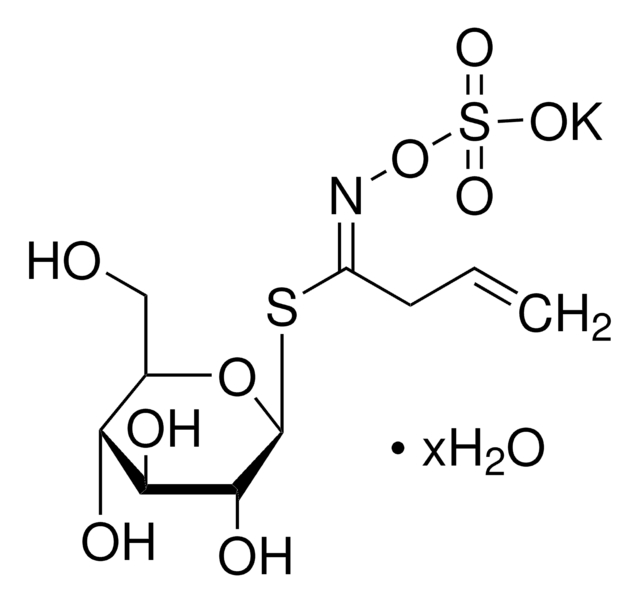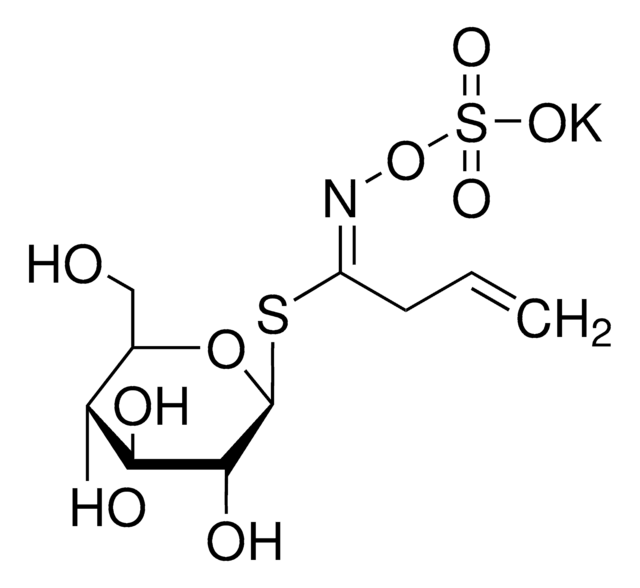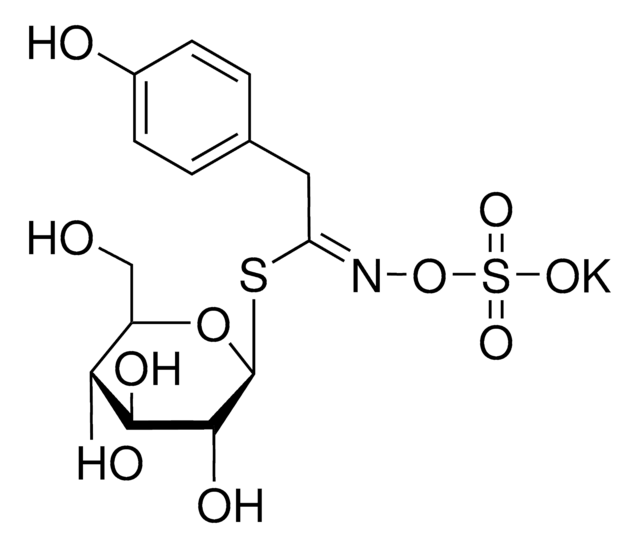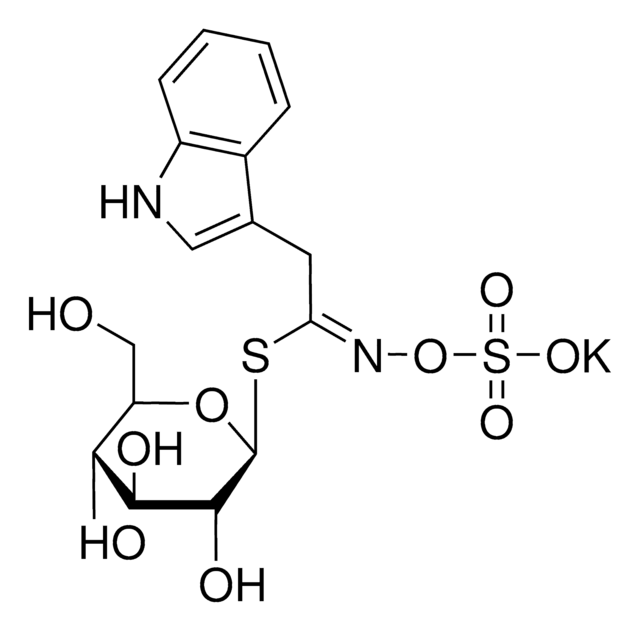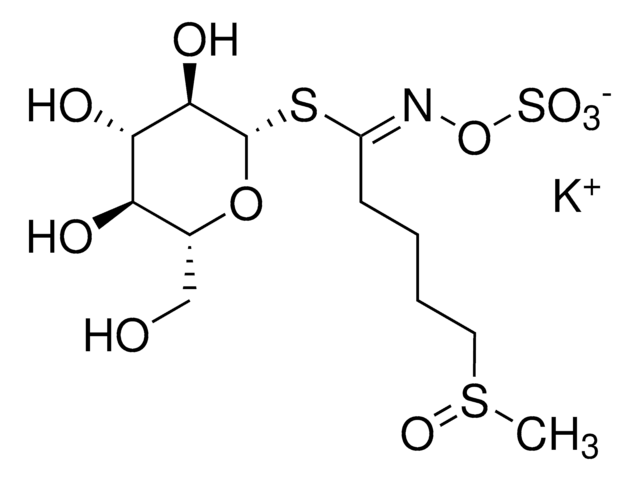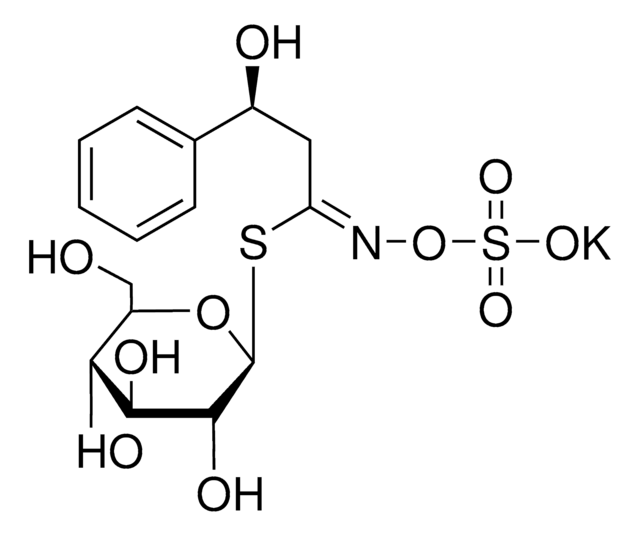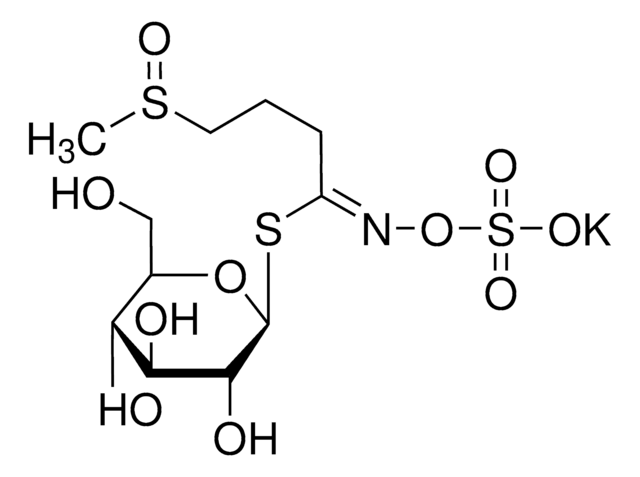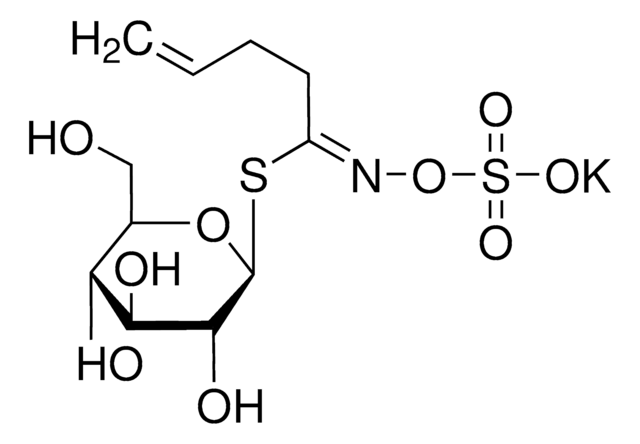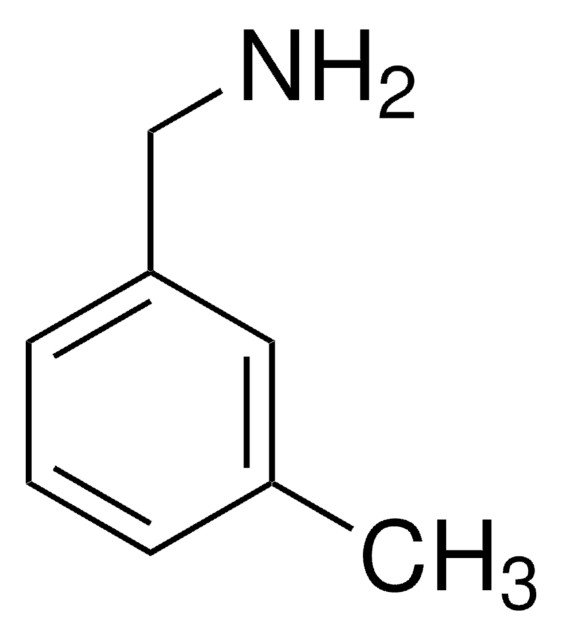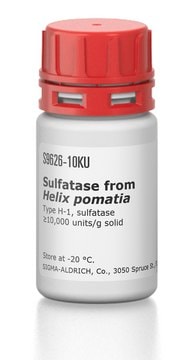Kluczowe dokumenty
00290
(−)-Sinigrin hydrate
analytical standard
About This Item
Polecane produkty
Poziom jakości
klasa czystości
analytical standard
Próba
≥99.0% (TLC)
aktywność optyczna
[α]/D -17.0±1°, c = 1 in H2O
okres trwałości
limited shelf life, expiry date on the label
zanieczyszczenia
≤6.0% water
mp
128 (dec.) (lit.)
Zastosowanie
food and beverages
Format
neat
ciąg SMILES
[K+].[H]O[H].OC[C@H]1O[C@@H](S\C(CC=C)=N\OS([O-])(=O)=O)[C@H](O)[C@@H](O)[C@@H]1O
InChI
1S/C10H17NO9S2.K.H2O/c1-2-3-6(11-20-22(16,17)18)21-10-9(15)8(14)7(13)5(4-12)19-10;;/h2,5,7-10,12-15H,1,3-4H2,(H,16,17,18);;1H2/q;+1;/p-1/b11-6+;;/t5-,7-,8+,9-,10+;;/m1../s1
Klucz InChI
IUBVMJHASFBYGW-WBMBWNLZSA-M
Szukasz podobnych produktów? Odwiedź Przewodnik dotyczący porównywania produktów
Działania biochem./fizjol.
Opakowanie
Hasło ostrzegawcze
Warning
Zwroty wskazujące rodzaj zagrożenia
Zwroty wskazujące środki ostrożności
Klasyfikacja zagrożeń
Skin Sens. 1
Kod klasy składowania
11 - Combustible Solids
Klasa zagrożenia wodnego (WGK)
WGK 3
Temperatura zapłonu (°F)
Not applicable
Temperatura zapłonu (°C)
Not applicable
Wybierz jedną z najnowszych wersji:
Certyfikaty analizy (CoA)
Nie widzisz odpowiedniej wersji?
Jeśli potrzebujesz konkretnej wersji, możesz wyszukać konkretny certyfikat według numeru partii lub serii.
Masz już ten produkt?
Dokumenty związane z niedawno zakupionymi produktami zostały zamieszczone w Bibliotece dokumentów.
Klienci oglądali również te produkty
Nasz zespół naukowców ma doświadczenie we wszystkich obszarach badań, w tym w naukach przyrodniczych, materiałoznawstwie, syntezie chemicznej, chromatografii, analityce i wielu innych dziedzinach.
Skontaktuj się z zespołem ds. pomocy technicznej